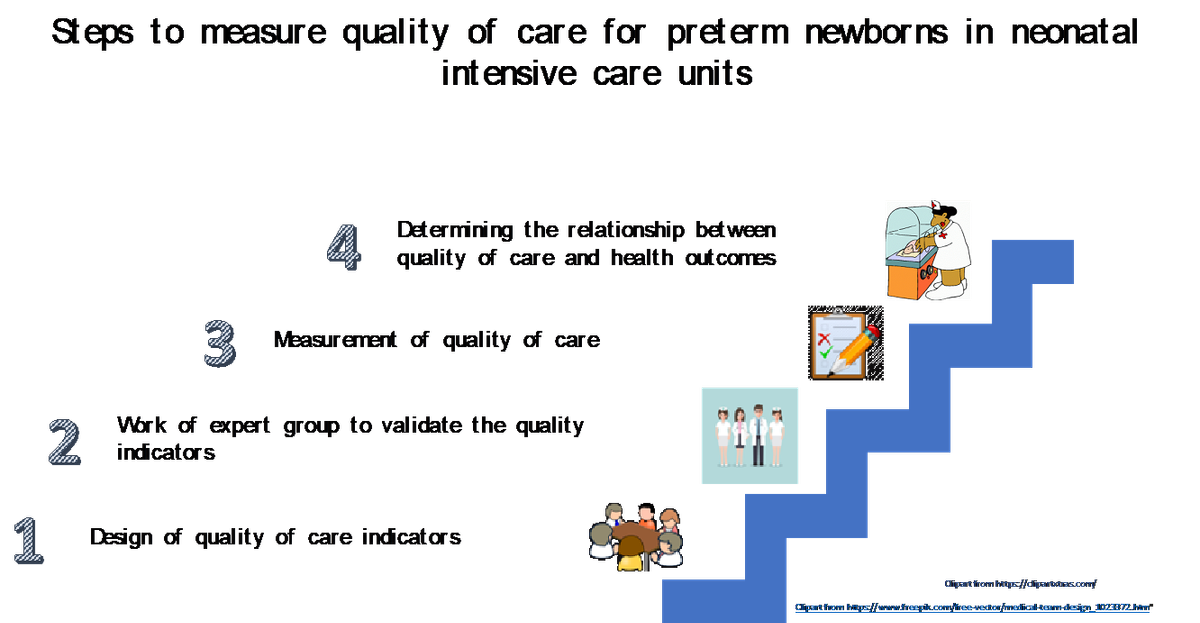Layman Summaries of IJQHC Articles

Layman summaries for IJQHC Volume 30 Issue 8
.
Evaluating the quality of the processes of care and clinical outcomes of premature newborns admitted to neonatal intensive care units in Mexico
Author(s): Svetlana V. Doubova, Heladia Josefa-García, Irma Alejandra Coronado-Zarco, Sandra Carrera-Muiños, Guadalupe Cordero-Gonzalez, Leonardo Cruz-Reynoso, Leovigildo Mateos-Sanchez, Ana Jesica Maya-García, Ricardo Pérez-Cuevas.
México and other Latin American countries still face a substantial number of deaths of newborns in comparison to developed countries. The difference is visible, whereas the Latin American region has on average eight neonatal deaths per 1000 live births, in developed countries the figure drops down to three neonatal deaths per 1,000 live births. Most of these babies die within the first 28 days of life. A substantial number of newborn deaths happen in neonatal intensive care units (NICUs). This undesirable outcome is related not only to the severity of the conditions of the newborns but also to the quality of health care they receive.
In Mexico, NICUs lack instruments to measure the quality of care for preterm newborns. We conducted a study to identify the gaps in quality at NICUs. First, we designed quality indicators through reviewing national and international evidence-based clinical guidelines. Then, we worked with neonatologists, pediatric nurses, and health system researchers to build the best possible indicators to measure quality at NICUs. Next, we measured the quality of care of NICUs in two hospitals. Finally, we analyzed the relationship between the quality and the occurrence of severe clinical outcomes such as deaths, infections and respiratory complications among others.
We constructed 15 indicators to evaluate the quality of the process of care and health outcomes and applied these indicators in 489 preterm babies. Our results signaled severe deficiencies in the process of care. These are some examples, slightly more than half of the preterm neonates received surfactant when needed. Surfactant helps to mature the lungs so that the baby can breathe by himself. Half of the babies with severe infections had blood culture samples to identify the bacteria that caused the infection; all babies with severe infections should have blood culture samples. Only 18% of babies started feeding with human milk. In sum, only 26.6% of neonates received a high quality of care. 61% of neonates developed severe clinical outcomes. For example, 15% of neonates without congenital malformations incompatible with life died during their hospitalization; 11% had respiratory complications; 49% had health care-related infections.
Finally, we learned that if the neonate receives a high quality of care, the odds of developing severe clinical outcomes is reduced by half. We identified that the processes of care at NICUs should be improved to achieve better health outcomes in preterm babies in Mexico, which in turn will contribute to stave off neonatal mortality.
__________________________________________________________________
The full article can be viewed here -
https://doi.org/10.1093/intqhc/mzy061
Adaptation of a hospital electronic referral system for antimicrobial stewardship prospective audit and feedback rounds
Author(s): Matthew D M Rawlins, Edward Raby, Frank M Sanfilippo, Rae Douglass,Jonathan Chambers, Duncan McLellan, John R Dyer
Antibiotic resistance is a significant threat worldwide and as research into the development of new antibiotics has slowed it has become more important to use the antibiotics we have more responsibly. Antimicrobial stewardship programs promote the responsible use of antibiotics and are now compulsory in Australian Hospitals.
At our new hospital in Australia we wanted to improve the way our antimicrobial stewardship team, made up of a senior infectious diseases doctor and a senior pharmacist with experience in infectious diseases, could identify and provide advice to the medical teams caring for patients on broad-spectrum antibiotics.
We took an existing computer program called eReferrals which was designed to ask experts for advice in managing complex patients and modified it for our use. We included a questionnaire about the antibiotics the patients were on and the reason why, as well as whether they had any allergies. We also made sure pharmacists had permission to use eReferrals and trained them how to use it.
For the next 12 months, we then looked at how often eReferrals was used, who used it most and whether the advice of our team was followed. We also looked to see whether the use of certain broad-spectrum antibiotics changed at our hospital after we introduced eReferrals.
By the end of the 12 months we found that eReferrals was used about 90% of the time to ask for advice and that most of the time it was pharmacists using it. Three-quarters of patients were seen within 48 hours of the eReferrals request being received. We also found that as eReferrals was used more, our antibiotic advice was more likely to be followed, and that over the 12 months period the use of most of our broad-spectrum antibiotics of interest fell.
__________________________________________________________________
The full article can be viewed here -

